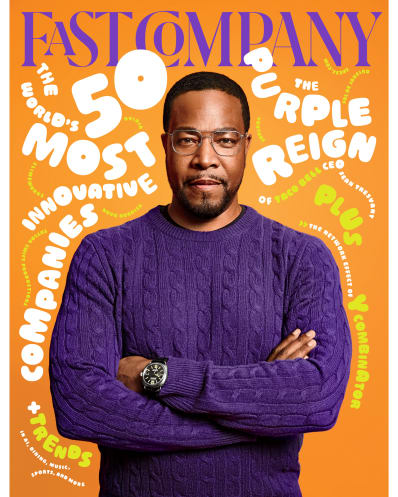Navigating the investment landscape is increasingly complex. Supply chain issues, soaring inflation, rising energy prices, spiraling cost of raw materials the list goes on.
advertisementadvertisementIncreasingly, alarming levels of global biodiversity loss or, in investment-speak, the permanent destruction of natural capital must also be taken into account. In fact, the situation has reached a crisis point where investors are now recognizing the direct line of risk between their portfolios and the natural resources they depend on.
All is not lost. As investors finally start to quantify the risk of global biodiversity loss in terms of dollars, it could spark the level of change that has been so urgently needed for so long. Indeed, investment is now being billed as a key area of debate at the upcoming UN COP-15 summit on biodiversity.
Alongside the significant economic opportunity there is of course also a climate imperative on financial companies to halt the ecological destruction of the Earth. Thankfully, these companies are starting to take notice and establish roots in the movement to reverse biodiversity loss.
advertisementadvertisementAs momentum builds in the financial world, so too will pressure on companies in other industries to set targets, report publicly on the biodiversity impact of their operations, and take active steps to improve their overall net output.
The scale of the problem is becoming more stark in July, the Environment Agency published a report which found that one quarter of mammals in England and nearly 20% of UK plants are threatened with extinction. Globally, the picture isn t any prettier the UN predicts that one million species will be extinct by 2039.
The business imperativeBoth directly and indirectly, biodiversity creates significant economic value that s hard to fully quantify. Ecosystem services like food provisioning, carbon storage, and water and air filtration are estimated to be worth more than $150 trillion annually about twice the world s GDP.
advertisementTherefore alongside the moral obligation, there s also a real business imperative to taking action. The decline of natural ecosystems costs the global economy an estimated $5 trillion a year in lost natural services. And it s not just sectors like forestry, mining, and agriculture that are impacted either. The vast majority of companies rely on natural capital in some form whether it be freshwater for beverage companies, stable crops for the food industry, or ecosystems for pharmaceutical businesses and so, biodiversity carries real implications for financial performance.
And yet, as things stand, there is dispiritingly little being done. The UN s COP-15 biodiversity summit tasked with addressing this issue has been delayed four times since its original date in October 2020. It is still yet to take place, although the date and venue have now at least been confirmed (December, Montreal).
In lieu of government action, the responsibility falls on investors and businesses to do more to directly combat biodiversity loss. However, biodiversity recovery is an industry that remains in relative infancy in the UK. Although some early adopters are calculating net gain through tools like Biodiversity Metric 3.0 which converts habitats into biodiversity units to assist in improving land management outcomes there is currently no agreed universal system of measurement. This makes it difficult for businesses and institutions to understand where the environment is improving, or where the most help is needed.
advertisementHow do we move forward?There is some good news. Despite the very real threats to business that come with the decline of ecosystems, crisis also creates opportunity.
As markets start to feel the financial impact of biodiversity loss around the world, finding solutions is becoming a top priority for investors and board members, which could provide the impetus the issue urgently requires.
Corporate landowners and developers in particular hold real power to improve biodiversity at their sites. We re already seeing some good work in this space in the UK through large-scale habitat restoration and tree planting programs. With local governments often lacking the requisite funding and expertise, it s up to businesses to support and get involved in these types of projects.
advertisementBusinesses without large green spaces can establish and work toward biodiversity too. One way for them to make early progress is through biodiversity credits similar to carbon credits that help businesses meet objectives by leasing the space of large landowners for regenerative investment. This is particularly popular with property companies in the UK, who are now required to drive 10% biodiversity net gain across new sites to comply with the Environment Act of November 2021.
Globally, the UN Convention on Biological Diversity is developing the Global Biodiversity Framework, which will be negotiated and it is hoped adopted as a Paris-style agreement at COP-15 later this year. Among other important steps, the framework will help investors integrate biodiversity into their portfolios by calling on businesses to measure and disclose their impact on ecosystems and natural resources.
Elsewhere, since launching nearly two years ago, support for the Finance for Biodiversity pledge which calls on global leaders to protect and restore biodiversity through their finance activities and investments has grown rapidly. It has now been signed by 98 financial institutions representing 19 countries and assets totaling 14 trillion. In turn, this is leading to real behavior change among its signatories, with companies like Aviva Plc and SLM Partners committing to invest in nature-positive industries like ecological farming and forestry.
advertisementIt s clear that stopping biodiversity loss isn t just responsible business practice, but is becoming a space which investors and financiers are increasingly excited about. For businesses, allowing the destruction of habitats and species loss is a shortsighted view that allows significant economic risk. Biodiversity net gain is now a boardroom-level topic, representing a vital means of creating a stable foundation for long term growth and investment.
Jason Knights is the managing director of UK-based Ground Control.
advertisementadvertisementadvertisementadvertisementadvertisement#FCFestival returns to NYC this September! Get your tickets today!
VideoTech






 [Source Images: Gwengoat/iStock/Getty Images Plus, Grafissimo/Getty Images, duncan1890/Getty Images, NSA Digital Archive/Getty Images]
[Source Images: Gwengoat/iStock/Getty Images Plus, Grafissimo/Getty Images, duncan1890/Getty Images, NSA Digital Archive/Getty Images]